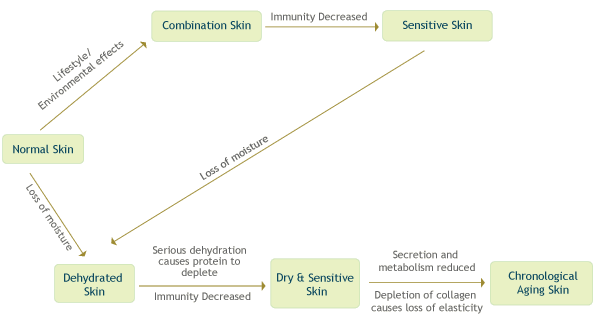Skin Analysis
Usually it gets started by observing the amount of sebum secretion, skin's radiance, skin elasticity, any allergies toward cosmetics, compare the results with the characteristics of each skin type, and you can more or less determine your skin type.
The common skin types are as follow:
- Normal Skin
Also defined as healthy skin. Texture is smooth with fine pores and balanced skin pH. - Oily Skin
Excess sebum secretion causes skin appearing greasy and shiny with blackheads and clogged pores. Oily skin is usually susceptible to dermatitis, acne and pustules. - Dry Skin
Uneven and dull skin tone due to insufficient oil excretion. Skin appears to be dry, strained and saggy. Dry skin may experience slough off of skin and susceptible to Pigmentation. - Combination Skin
Skin is sometimes dry or oily due to imbalanced skin pH, skin texture appears 'dirty', dull and lackluster. T-Zone is susceptible to breakouts of comedones and blackhead, large pores, pimples. May have fine lines at cheeks and around the eyes. - Dehydrated Skin
Loss of moisture to the level of 20% or lower. Skin temperature fluctuates and susceptible to redness and slough off of skin. Has large pores. Skin appears saggy and dull.
Skin type is determined when one is born but it can change as time goes by. Which means, even if you have normal skin now, your skin may experience dryness and oily due to the changes of the environment. There may be patches with different skin type appearing on a face as well. Hence, it is recommended to (approach a professional therapist) to constantly review your skin type and choose the right skin care products accordingly.



